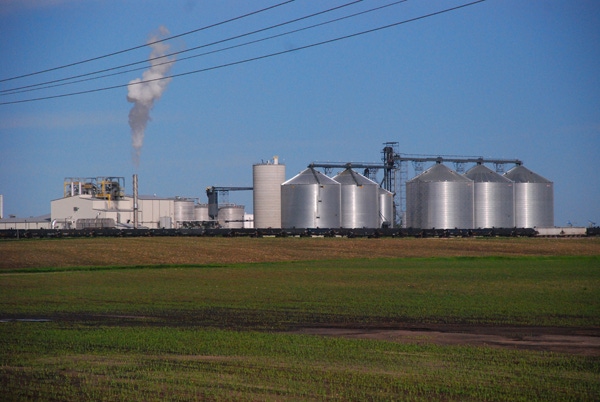EPA releases final renewable volume obligation targets Friday which were highly criticized by biofuel members.
November 30, 2018

On Nov. 30, the Environmental Protection Agency's (EPA) released the renewable volume obligation (RVO) targets for 2019 under the Renewable Fuel Standard (RFS).
EPA announced the “conventional” renewable fuel volumes, primarily met by corn ethanol, will be maintained at the implied 15-billion gallon target set by Congress for 2019.
Advanced biofuel volumes for 2019 will increase by 630 million gallons over the 2018 standard. Cellulosic biofuel volumes for 2019 will increase by almost 130 million gallons over the 2018 standard. Biomass-based diesel volumes for 2020 will increase by 330 million gallons over the standard for 2019.
The rule did not address the lost volume in past years from EPA waivers, a criticism from many biofuel supporters as EPA granted refineries 2.25 billion gallons in RFS waivers over the past year but did nothing to account for those lost volumes.
Growth Energy CEO Emily Skor said, ”The latest EPA rule is a missed opportunity to correctly account for billions of gallons of ethanol lost to refinery exemptions. Until these are addressed properly, we’re still taking two steps back for every step forward. The current Acting EPA Administrator, Andrew Wheeler, has a valuable opportunity to chart a new course for biofuels and rural America. To reverse the damage done by his predecessor, the EPA must follow the law and reallocate lost gallons, ensuring the ethanol targets set by Congress are actually met.”
In comments on the rule, The National Corn Growers Association and its grower members urged EPA to take steps to maintain the integrity of the RFS, including projecting 2019 waivers and accounting for those gallons to keep the RFS volumes whole. By failing to account for waivers in this final rule, EPA ensures that any 2019 exemptions will reduce the volumes the agency sets today.
When the EPA continues to grant waivers and does not account for those volumes in this rule, domestic demand for our crop is lost, impacting farmers’ livelihood and the economy of rural America,” Chrisp said.
Advanced biofuels limitations
Brooke Coleman, executive drector of the Advanced Biofuels Business Council, said, “The final targets open new possibilities for advanced and cellulosic biofuels, but without a check on abusive EPA waivers, we’ll continue to see plants closing their doors or idling production. The agency cannot fulfill the president’s commitments in the heartland without putting a lid on handouts to oil giants like Chevron and Andeavor. It’s vital that acting Administrator Wheeler work quickly to impose some meaningful limits on waivers and reallocate lost gallons.
The biodiesel levels also missed the mark, according to the National Biodiesel Board (NBB). EPA set the advanced biofuel and biomass-based diesel volumes lower than what the agency acknowledges will be produced, NBB said.
EPA made very few changes from its June proposal, setting the 2020 biomass-based diesel volume at 2.43 billion gallons and the 2019 advanced biofuel renewable volume obligation (RVO) at 4.92 billion gallons. The biomass-based diesel RVO for 2019 was set at 2.1 billion gallons in last year’s rule. EPA used its cellulosic waiver authority to make the maximum possible reductions to the advanced biofuel and overall renewable fuel categories.
NBB CEO Donnell Rehagen stated, “EPA recognizes that the biodiesel and renewable diesel industry is producing fuel well above the annual volumes. The industry regularly fills 90 percent of the annual advanced biofuel requirement. Nevertheless, the agency continues to use its maximum waiver authority to set advanced biofuel requirements below attainable levels. The method is inconsistent with the RFS program’s purpose, which is to drive growth in production and use of advanced biofuels such as biodiesel.”
In the final rule, EPA states that it has not received small refinery exemption petitions for 2019 and therefore estimates zero gallons of exempted fuel in its RVO formula. The agency has estimated zero gallons every year since 2015, even though it retroactively exempted more than 24.5 billion gallons of fuel between 2015 and 2017. The agency’s own data shows that the retroactive small refinery exemptions reduced demand for biodiesel by more than 300 million gallons in 2018.
Opponents want reset
The National Council of Chain Restaurants called on the EPA to completely review biofuel levels under the federal Renewable Fuel Standard, saying increased levels announced for 2019 meet requirements for a “reset” of the program.
“Now that the reset provision has been triggered, the EPA will have the opportunity to ramp down the annual volume levels set forth in the statute over a decade ago,” NCCR executive director David French said. “Not only are those old levels wildly unrealistic for advanced fuels, the levels required for last-generation, conventional corn ethanol are unnecessary and run counter to the law’s environmental goals.”
NCCR reported that while the amount of biofuel from corn ethanol is already maxed out at the 15 billion gallons allowed under the program, the amount from advanced biofuels like biodiesel, cellulosic ethanol and other niche fuels will increase to 4.92 billion gallons, up 14.7% from this year.
“Those numbers are high enough to set in motion a reset of the RFS program required by law when levels deviate more than 20 percent from those allowed under the RFS statute for two consecutive years. The reset means the EPA is required to conduct a complete review biofuel levels under the program, which could lead to lower levels being set,” NCCR said.
You May Also Like


.png?width=300&auto=webp&quality=80&disable=upscale)
